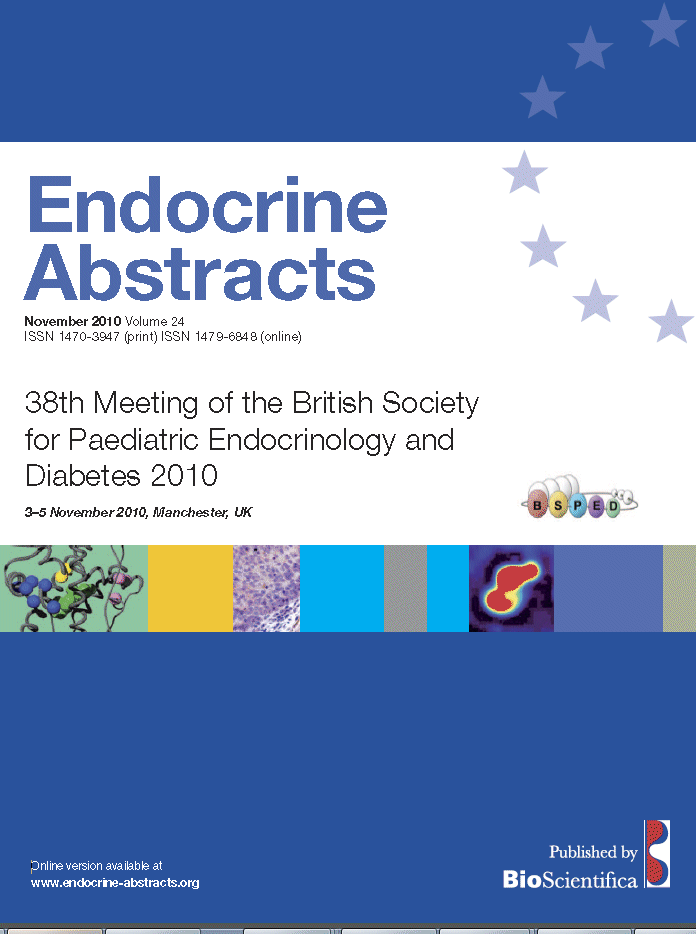
38th Meeting of the British Society for Paediatric Endocrinology and Diabetes
Oral Communications
Oral Communications 2 (Brief Communications)
ea0024oc2.1 | Oral Communications 2 (Brief Communications) | BSPED2010
Space-time clustering of elevated TSH levels on newborn screening
Pearce M , McNally R , Day J , Korada M , Turner S , Cheetham T
ea0024oc2.2 | Oral Communications 2 (Brief Communications) | BSPED2010
An unbalanced maternal diet in pregnancy is associated with epigenetic effects in the offspring
Drake A , Knox R , Seckl J , Reynolds R
ea0024oc2.3 | Oral Communications 2 (Brief Communications) | BSPED2010
The phenotype of late-presenting congenital hyperinsulinism
Ilangaratne C , Rigby L , Skae M , Flanagan S , Ellard S , Banerjee I , Clayton P , Members NORCHI
ea0024oc2.4 | Oral Communications 2 (Brief Communications) | BSPED2010
Morbidity and Mortality of Infants with Salt Wasting Congenital Adrenal Hyperplasia in an Unscreened Population
Hird B E , Patel L , Tobi S , Clayton P E
ea0024oc2.5 | Oral Communications 2 (Brief Communications) | BSPED2010
Correlation of clinical and functional data to predict pubertal outcome in PAIS
Miles H , Lek N , Mooslehner K , Bunch T , Davies J
ea0024oc2.6 | Oral Communications 2 (Brief Communications) | BSPED2010
Novel TSHR mutations in a large cohort of consanguineous families with congenital non-goitrous hypothyroidism
Cangul H , Aycan Z , Saglam H , Yakut T , Karkucak M , Bas V , Eren E , Yuca S , Demir K , Cetinkaya S , Kirby G A , Morgan N V , Forman J R , Tarim O , Bober E , Cesur Y , Kendall M , Hogler W , Barrett T G , Maher E R
ea0024oc2.7 | Oral Communications 2 (Brief Communications) | BSPED2010
Wide range of eye abnormalities in patients with hypopituitarism: is this showing a novel genetic aetiology?
Alatzoglou K S , Kelberman D , Spadoni E , Gaston-Massuet C , Woods K , Natarajan A , Maghnie M , Bitner-Glinzicz M , Dattani M T
ea0024oc2.8 | Oral Communications 2 (Brief Communications) | BSPED2010
Radio-iodine therapy for autoimmune hyperthyroidism. A two centre, retrospective evaluation of practice and outcomes
Wnuk W , Balan K K , Cheetham T D , Acerini C L



